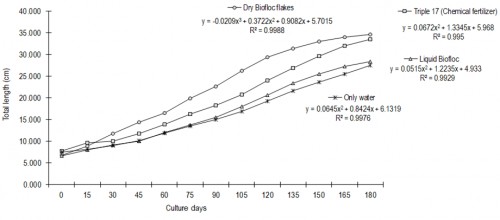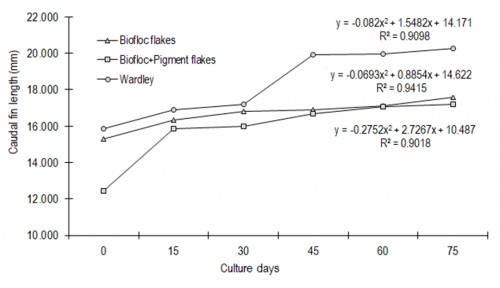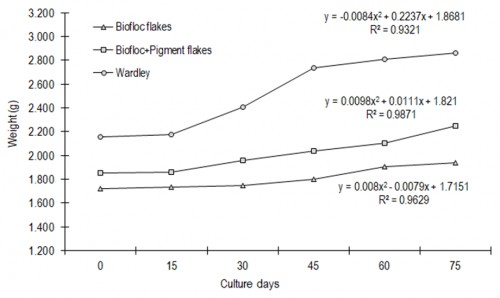International Journal of Fisheries and Aquatic Studies
2019, Vol. 7, Issue 6, Part A
Biofloc excess as raw material for flakes production to ornamental fish and their use as organic fertilizer (Liquid or dry) for plants
Author(s): Ramírez-Núñez J, Castro-Mejía G, Castro-Mejía J, Ocampo-Cervantes JA and Castro-Castellón AE
Abstract: This research was focused to found and apply to Biofloc excess produced in fish culture. For this, two options were considered: a) Flakes production to feed
Ciprinus carpio juveniles, and b) Liquid or dry Biofloc to use as fertilizer in
Capsicum annum plants. To make Biofloc flakes, it was used 80% of Biofloc and 20% of charal flour (DE). Three diets were tested: 1) Only DE, 2) DE with carrot (as pigment source), and 3) Control diet (Wardley® flakes). For chili plants it was tested: liquid Biofloc, dry Biofloc, Triple 17 and only water as fertilizer. The experiments had a duration of 75 and 180 days respectively. With
C. carpio the highest survival (80%) was found in Control diet, Biofloc diets only obtained between 10-26% of survival. With chili plants, dry Biofloc presented the best results with 11 fruits per plant, while the plants with only water presented only two fruits per plant. In both experiments, variance analysis (ANOVA) showed significant differences (
P<0.05) between treatments. It is necessary to know the adequate concentration of Biofloc for the elaboration of flakes and use them as a food source for fish. Used as fertilizer, first, liquid Biofloc need to be dry and then applied to as fertilizer.
Related Graphics: Click here for more related graphics: Fig. 1:
Fig. 1: Grow tendency curves of total length of plants of
C. annuum with four experimental fertilizers.
 Fig. 2:
Fig. 2: Grow tendency curve of caudal fin length of fishes with three experimental diets.
 Fig. 3:
Fig. 3: Grow tendency curve of fishes’ weight with three experimental diets
Click Here
How to cite this article:
Ramírez-Núñez J, Castro-Mejía G, Castro-Mejía J, Ocampo-Cervantes JA, Castro-Castellón AE. Biofloc excess as raw material for flakes production to ornamental fish and their use as organic fertilizer (Liquid or dry) for plants. Int J Fish Aquat Stud 2019;7(6):31-38.



